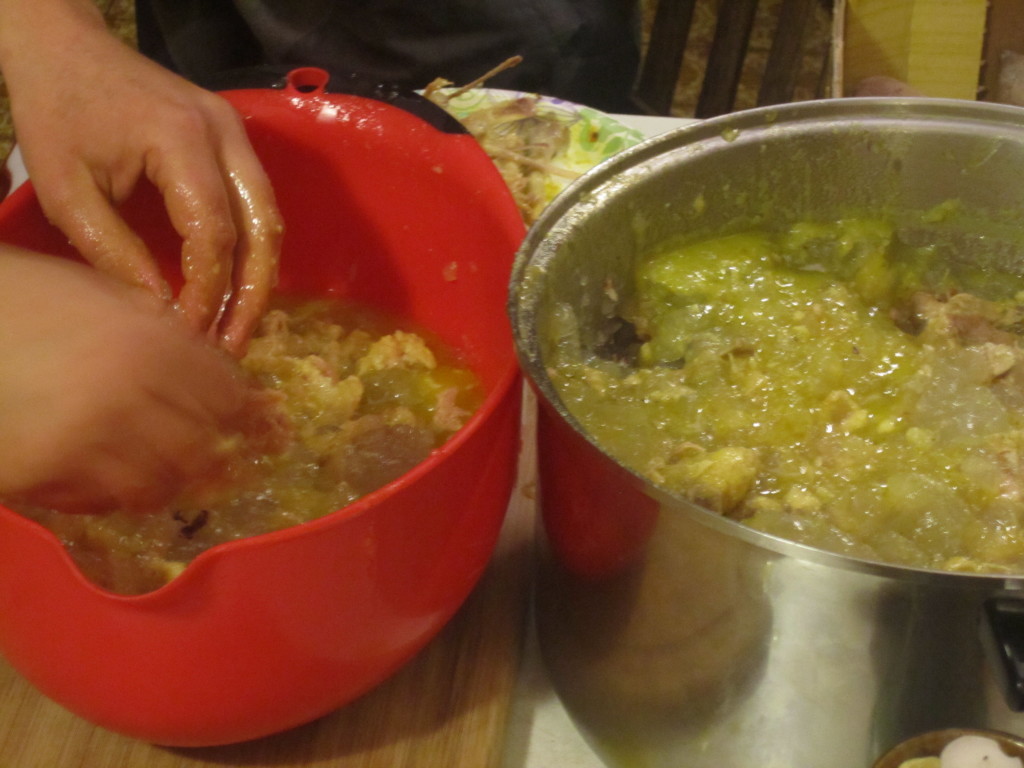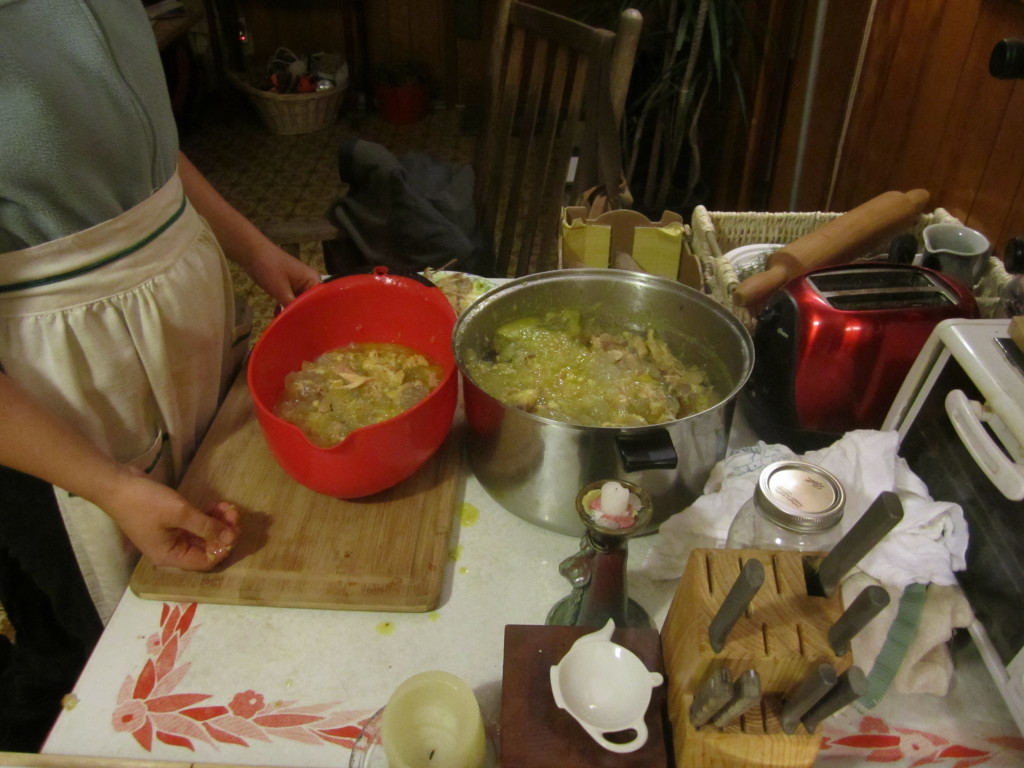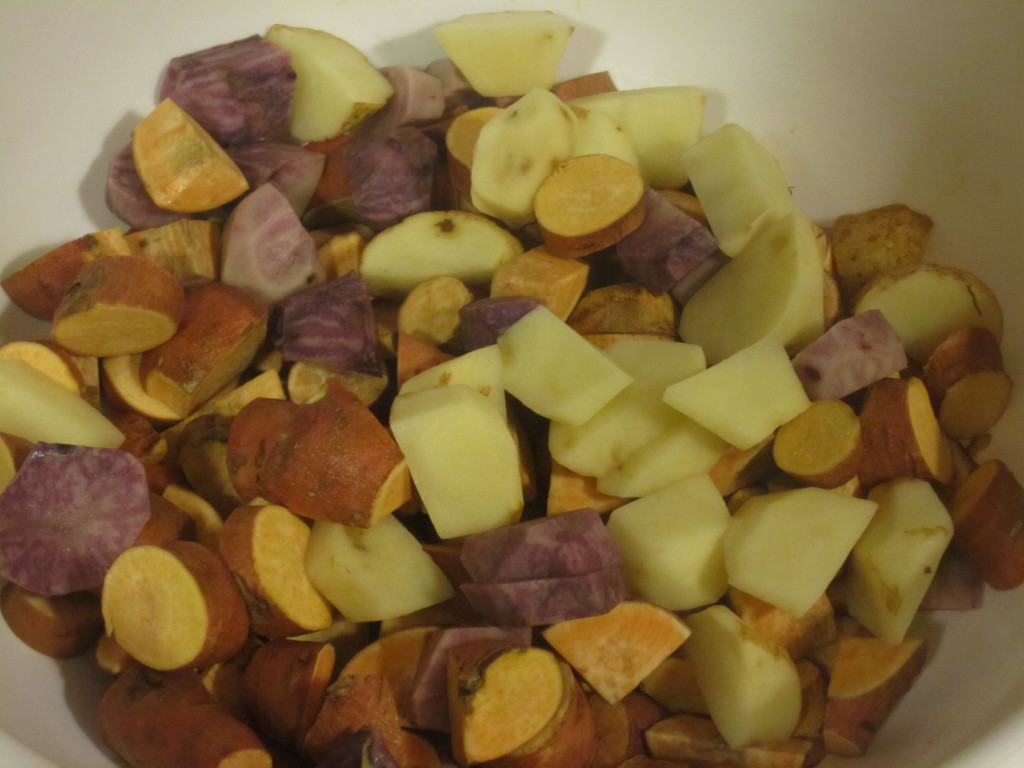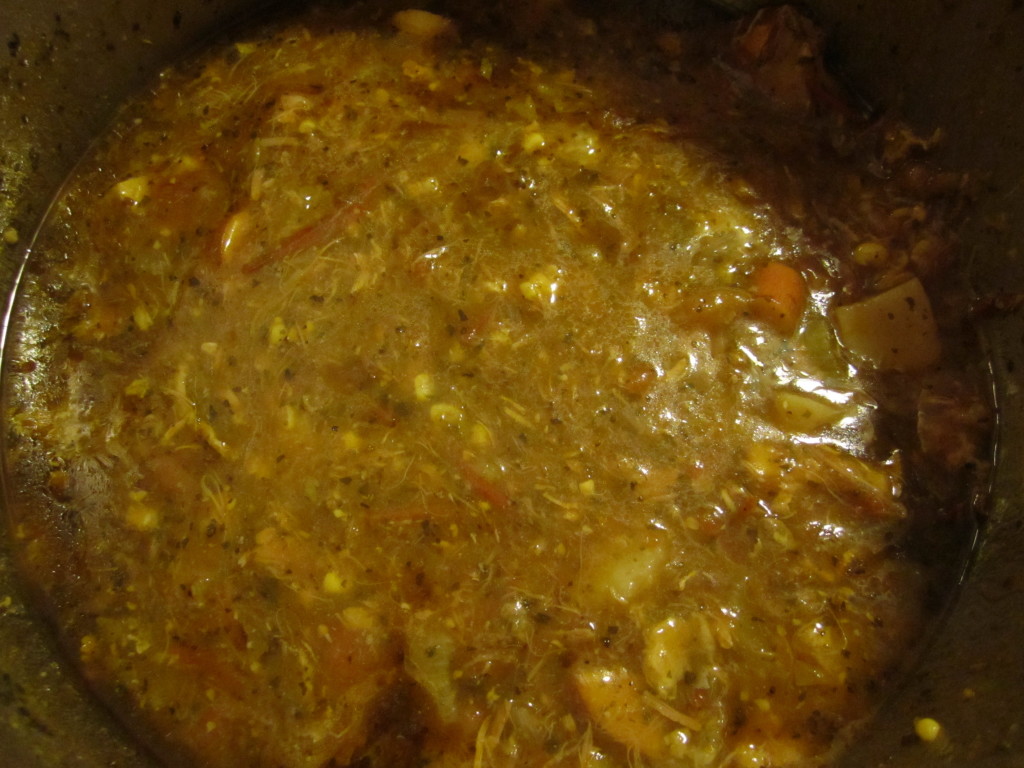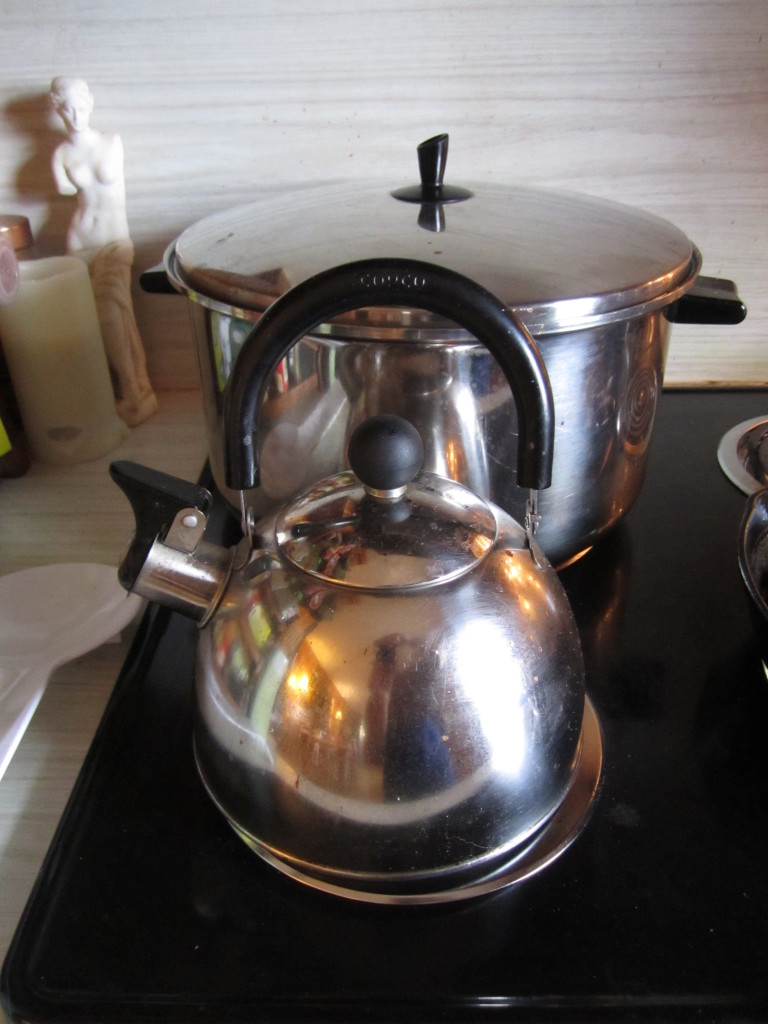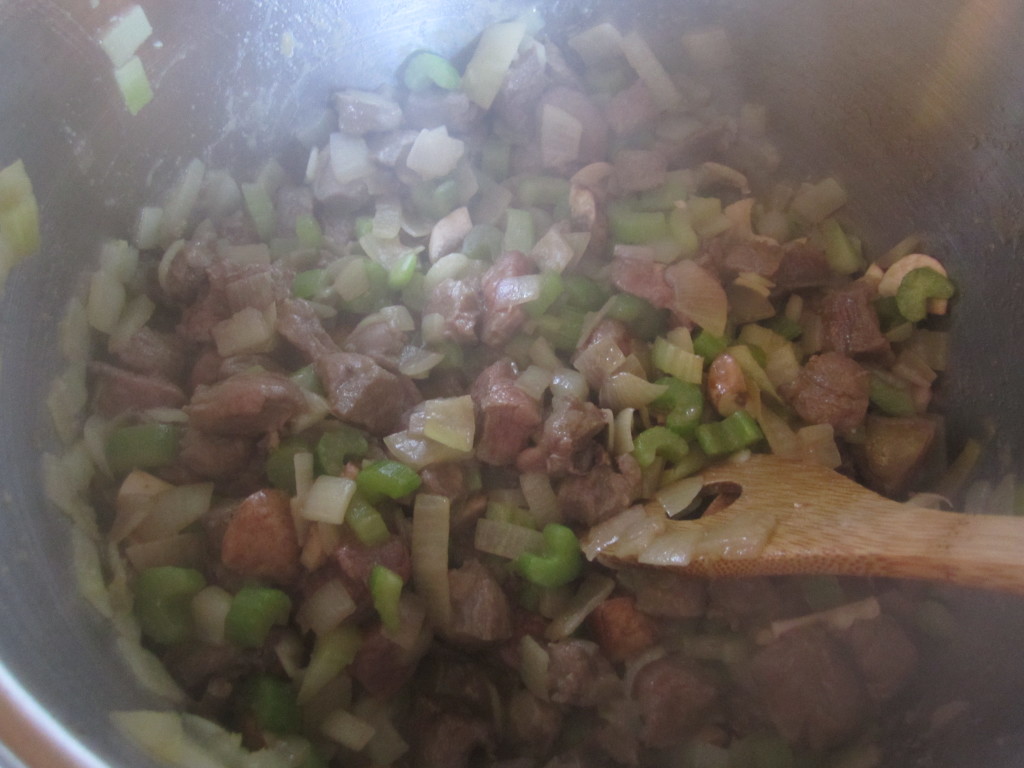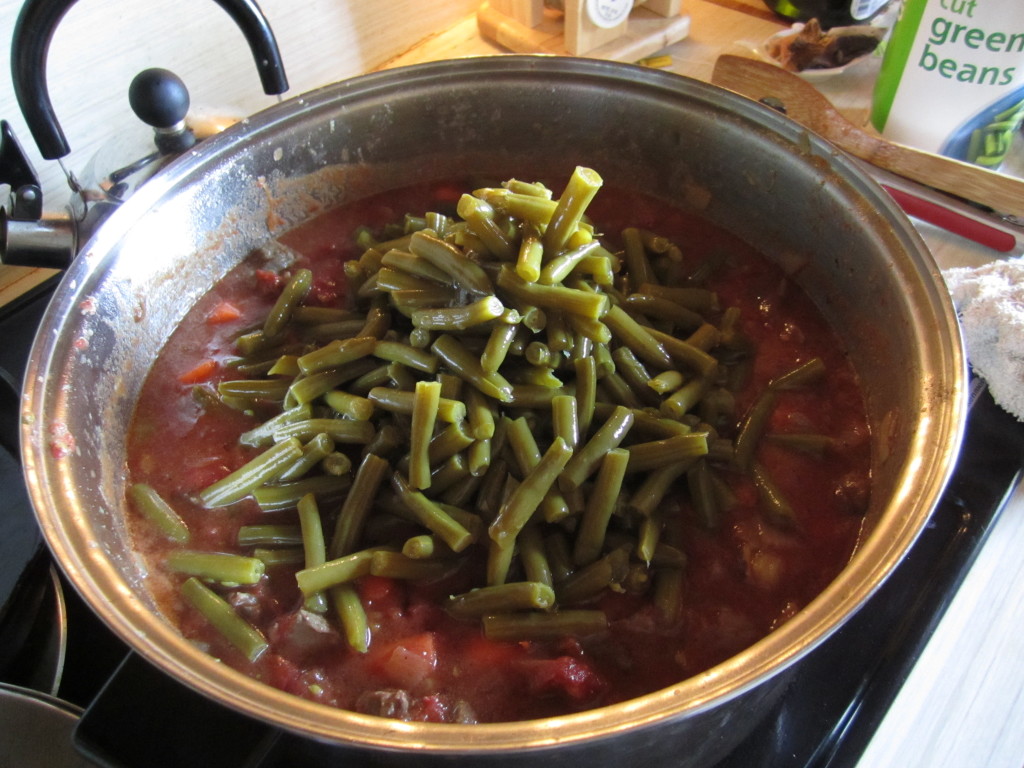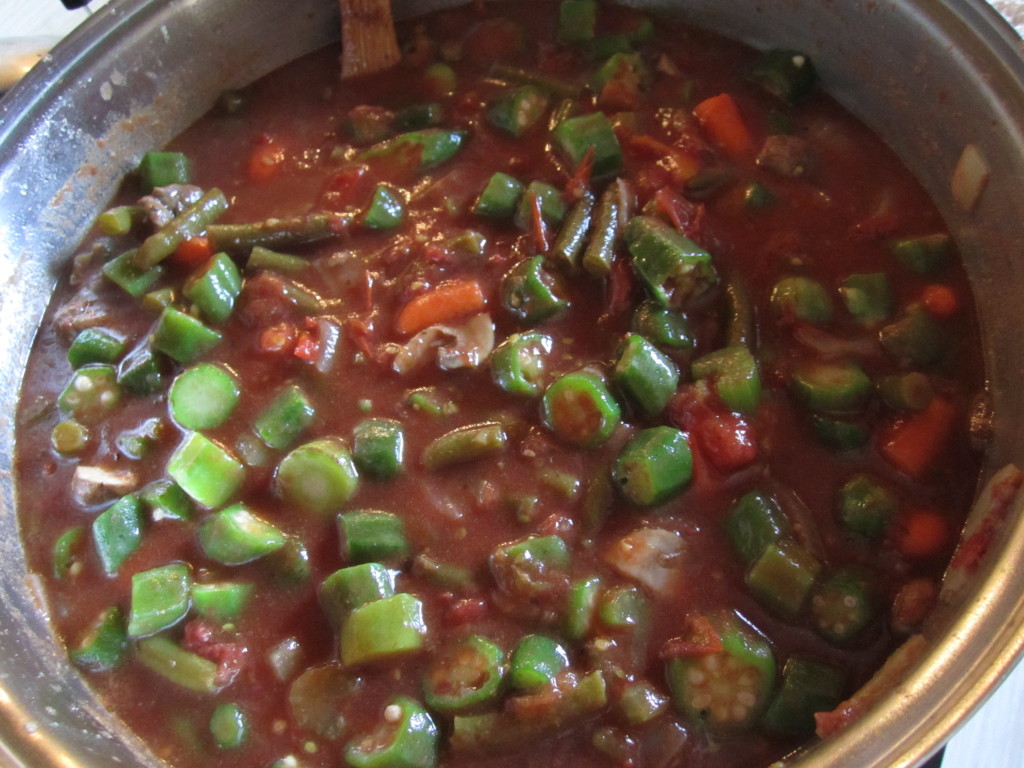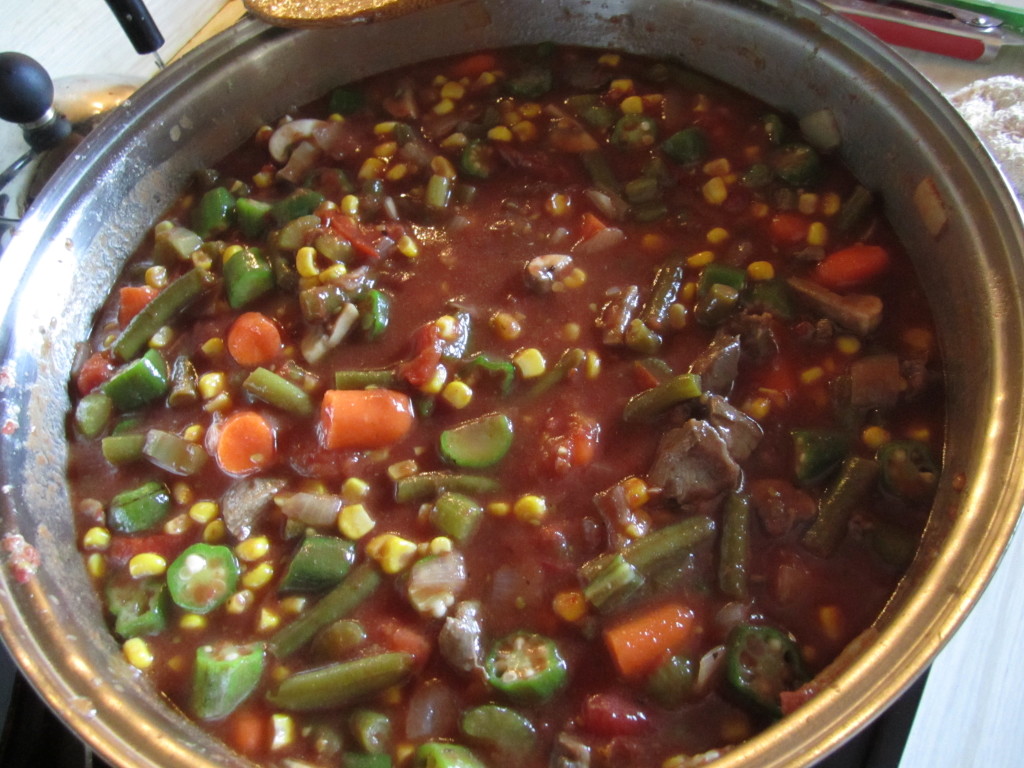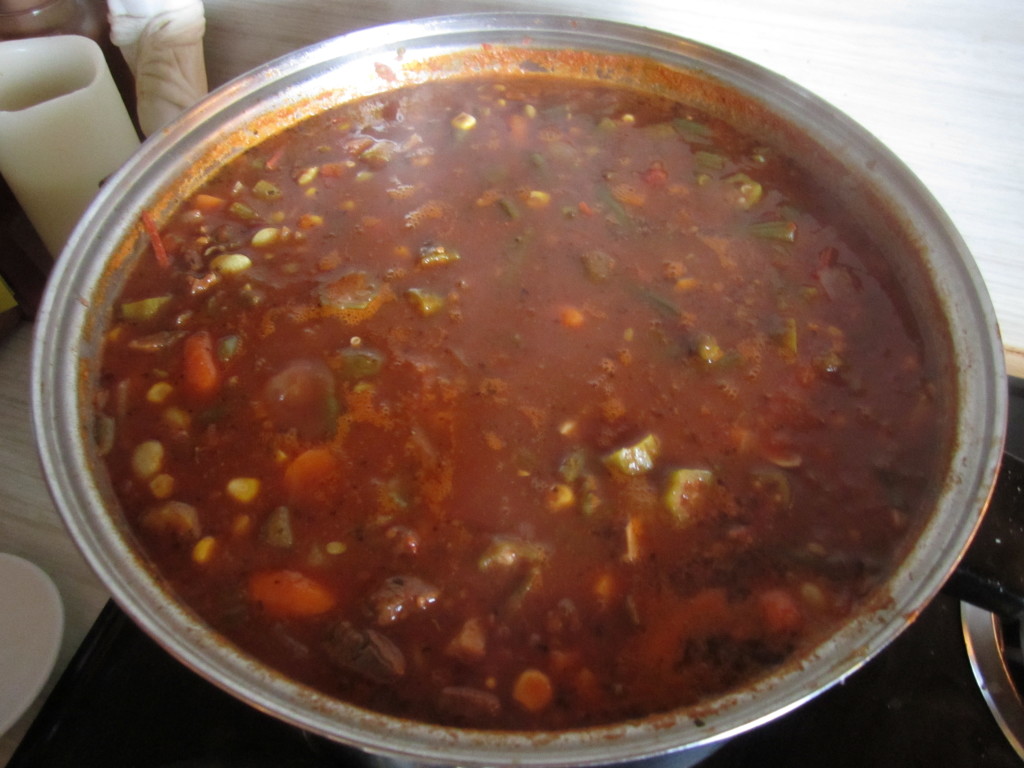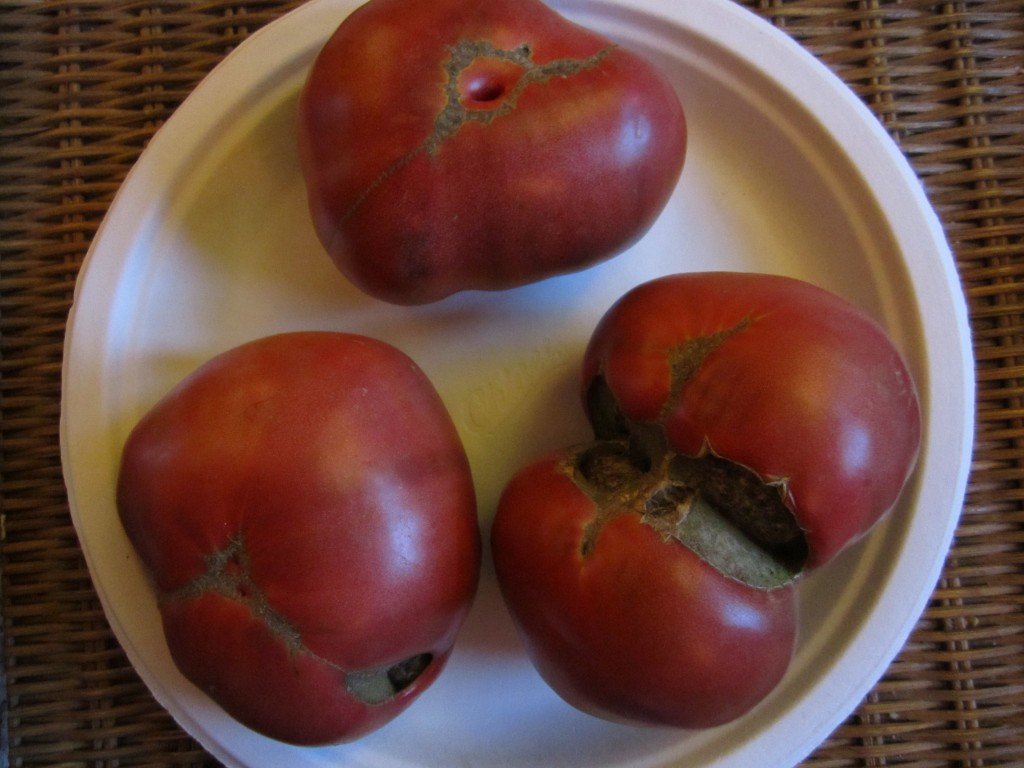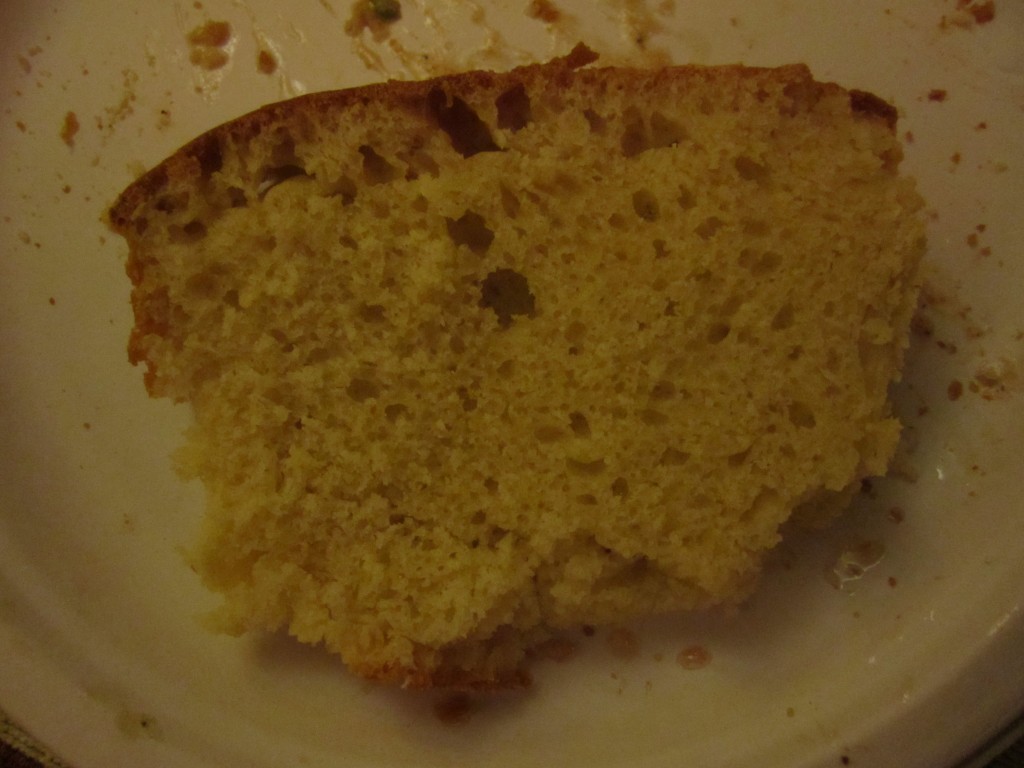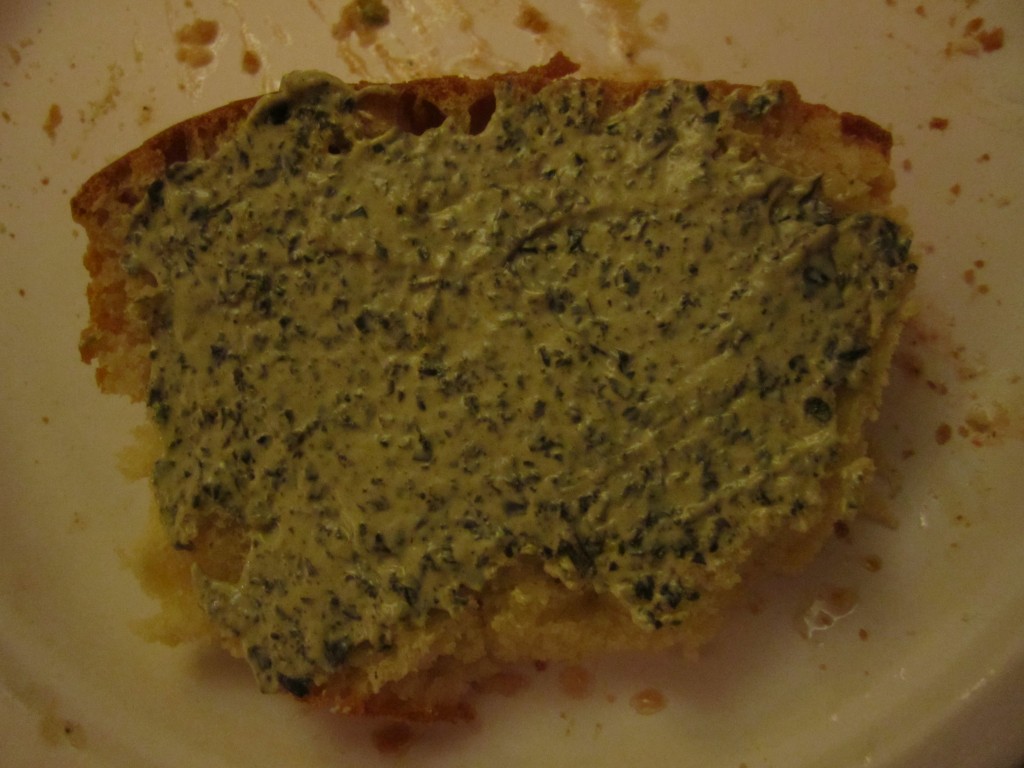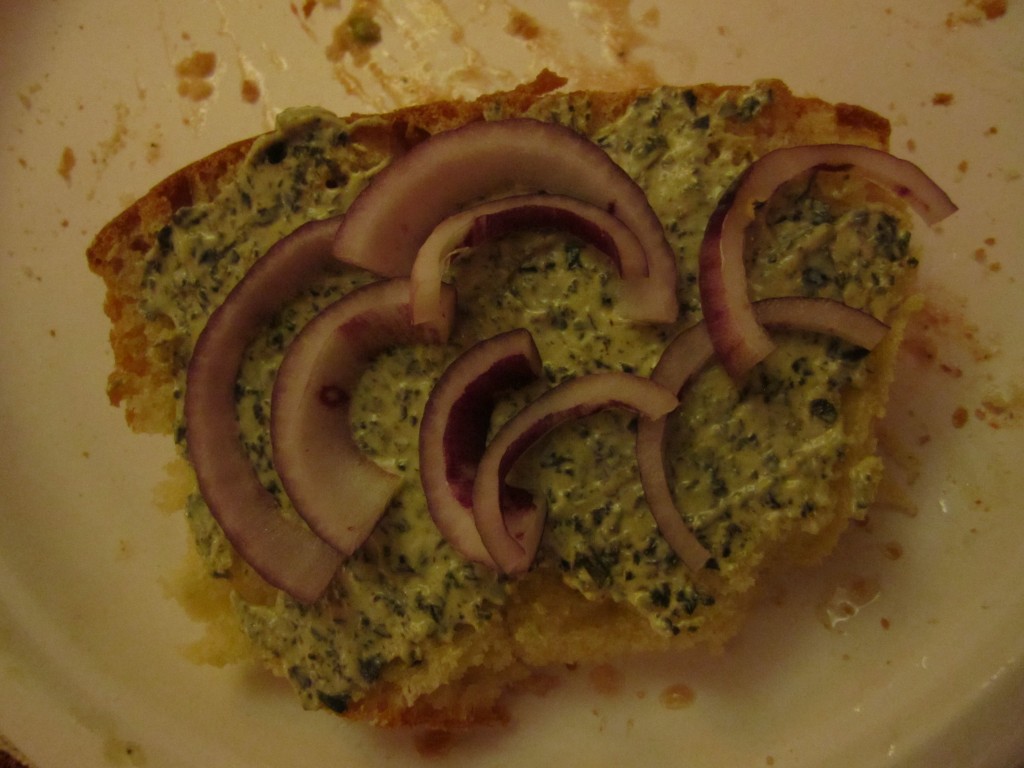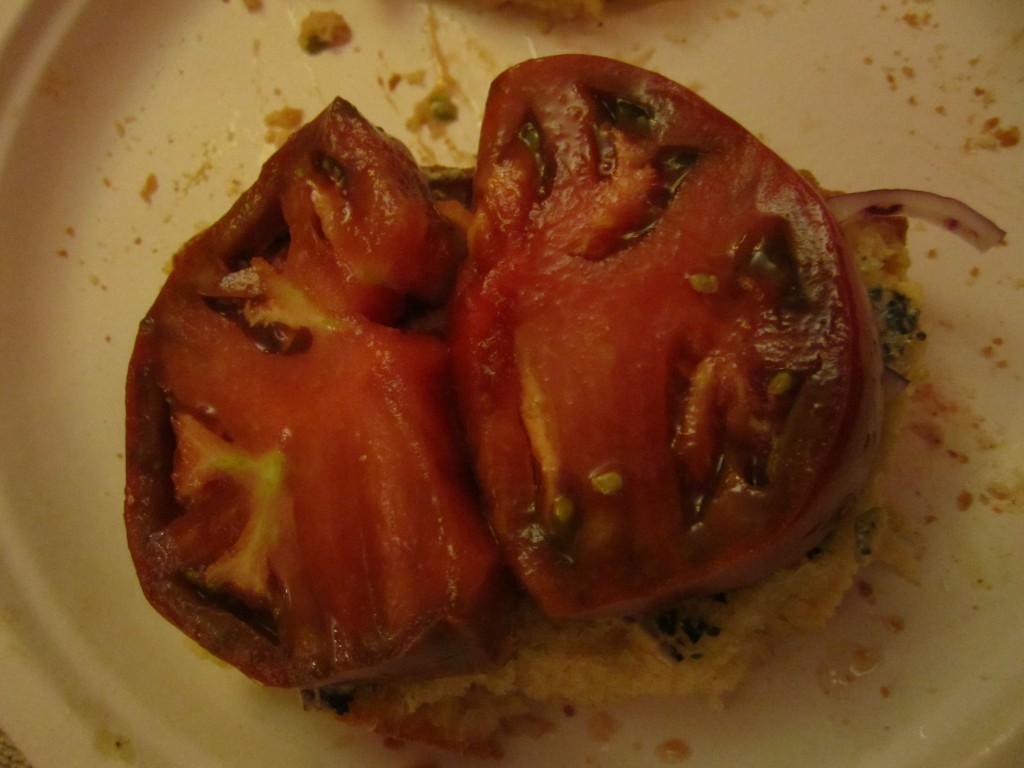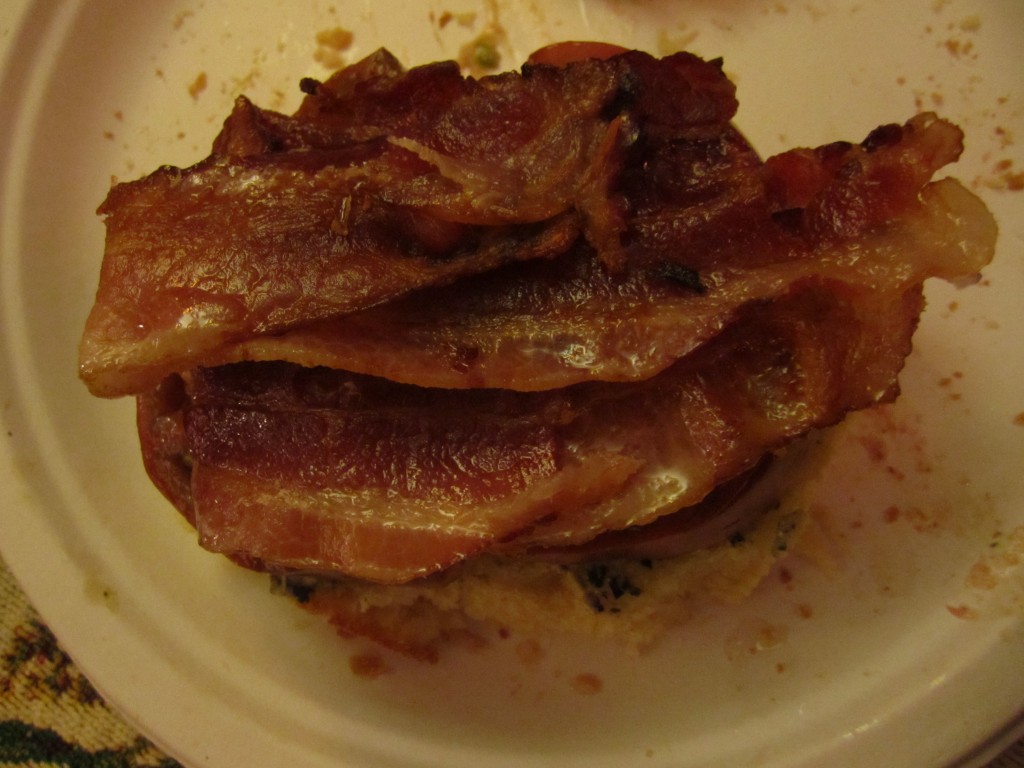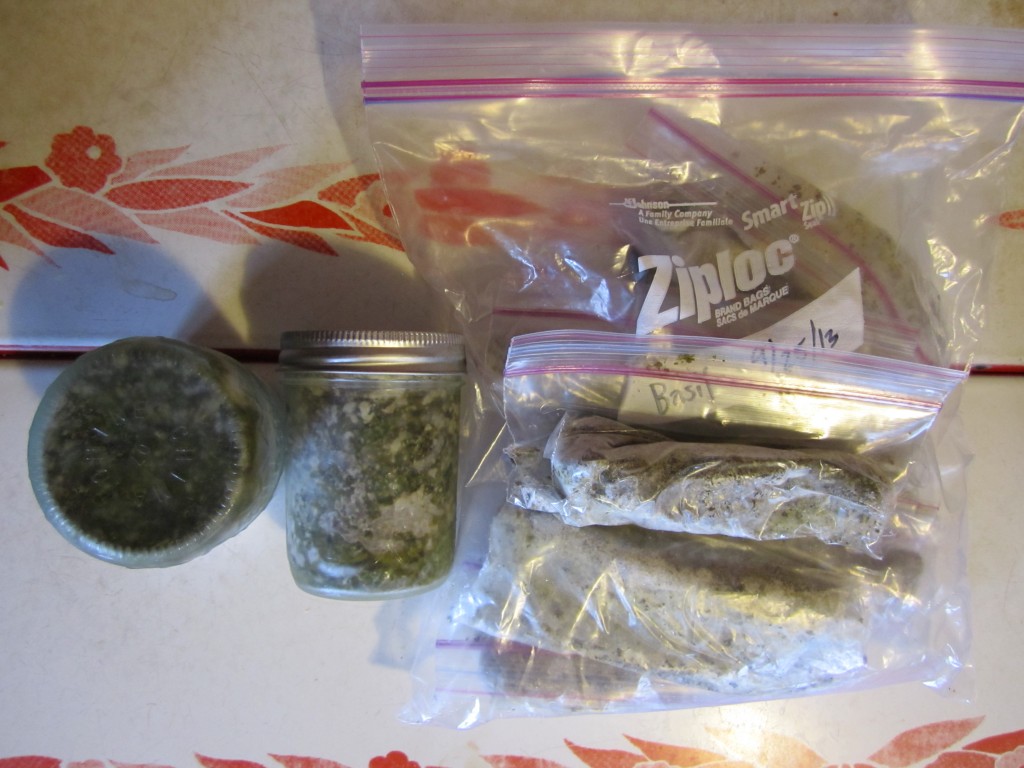The great thing about this soup, is that we raised almost all of the the ingredients!
Let me start by saying that the photographs do not do it justice… And you are going to need either a huge pot or two pots!
Ingredients:
- Bones and the partial meat of 3 teenage roosters
- Lots of sweet potatoes
- Lots of Irish potatoes
- About 25 garlic cloves
- 2 quarts of cubed tomatoes
- 2 Large onions
- Celery
- 1 pint of corn
- Basil, parsley, oregano, garlic powder, jalapeños
Directions:
The first thing we did was butcher our roosters, and since that would take forever to explain, we’ll save that story for another time. We roasted and ate some of the roosters and left part of the meat on the bones for our soup.
We cooked the roosters in a large pot with water and a little salt to make the broth. We included all of the bones, even the feet (which had already been peeled). The next day is when we had planned to start the soup, and when we removed the pot from the fridge to de-bone the meat, we found that the entire concoction was gelatinous! Talk about good, healthy, fat! Even though these roosters were not fully matured and they are not a breed that is bred just for their meat, they had so much delicious fat on them!
I de-boned the meat and placed the bones in the crockpot so we could cook these down further and make bone broth.
Then we sauteed diced onions, the garlic cloves, and celery in some of the fat. The onions and the garlics were from my dad’s garden!
The rest of the fat/meat/broth jelly was added to the pot and it started to melt and become true broth again. We added some of our diced and frozen basil, parsley, and jalapeño from the garden and let this melt and mix together.
Next in was the corn.
Then we added the potatoes (all from our garden) and once the soup was up to temperature again, we added the tomatoes. The tomato mix we used was a frozen bunch of cubed Cherokee Purples, San Marzanos, and Black Plums.
Then we added more basil, some oregano,salt, and garlic powder and continued to let it cook until the potatoes proved to be done!
And then we ate it! Last night for dinner and today for lunch and tonight for dinner… This soups is one of our favorites so far!
.:.
